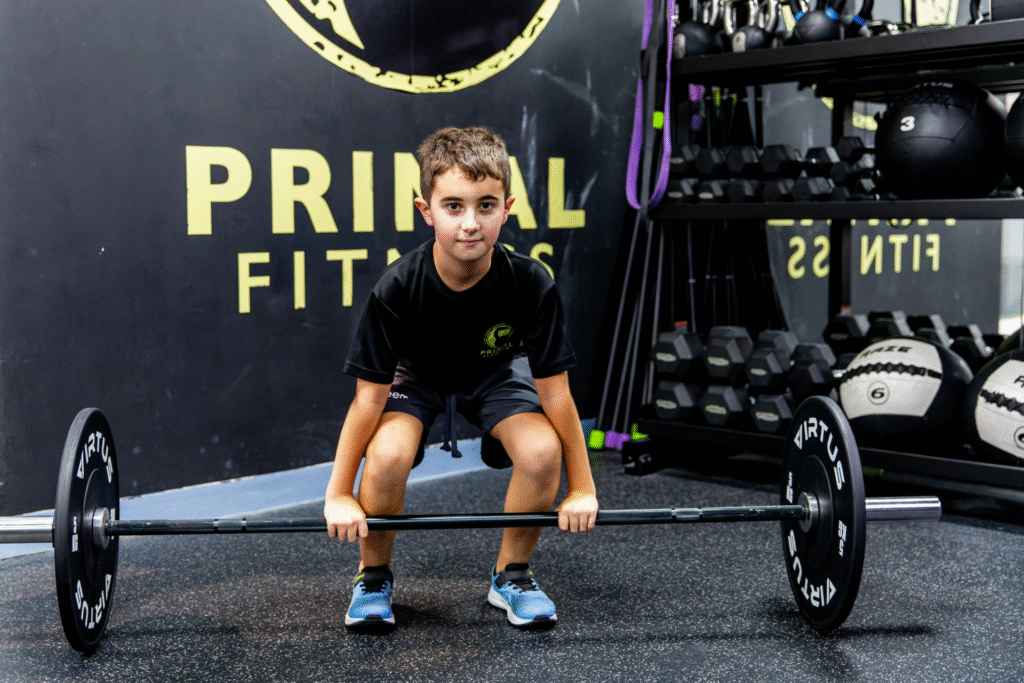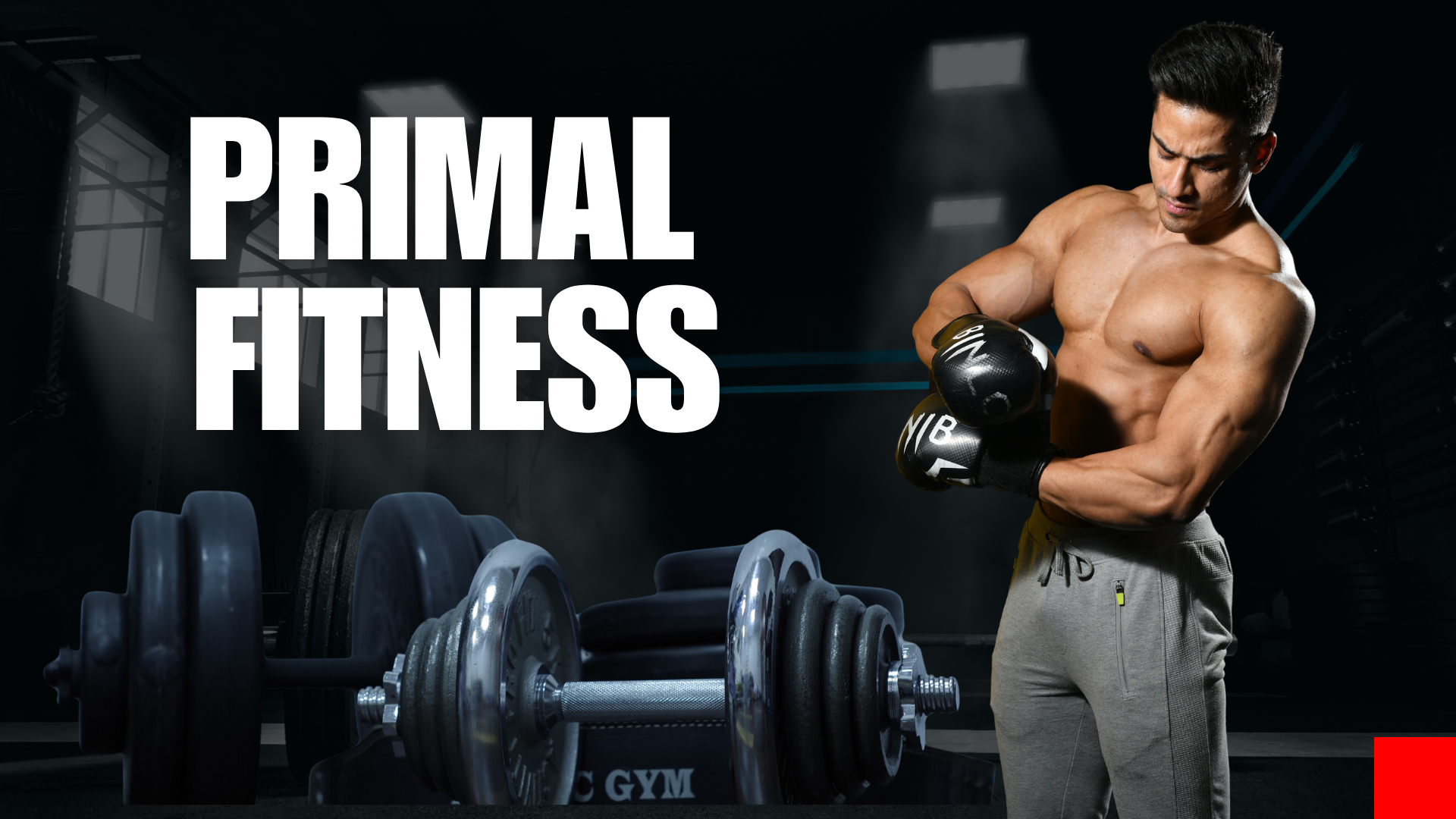Introduction
In a world full of high-tech gym machines, advanced fitness apps, and complex workout programs, sometimes the most effective way to train is to go back to the basics — the way our bodies were designed to move. Primal fitness focuses on natural, functional movements inspired by our ancestors’ daily activities.
Instead of isolating muscles with artificial exercises, primal workouts use whole-body movements that mimic climbing, crawling, lifting, sprinting, and balancing — the skills that kept early humans alive.
In this guide, we’ll explore what primal fitness is, its benefits, and how you can create effective primal workouts to build strength, mobility, and endurance — without needing expensive gym equipment.
1. What Is Primal Fitness?
Primal fitness is a training philosophy based on functional, natural movement patterns. These movements are rooted in the physical activities humans have performed for thousands of years — not to “work out,” but to survive.
The core idea is that your body is your gym. By training primal movements, you build real-world strength, flexibility, and coordination that translate into everyday activities.
Key Movement Patterns in Primal Fitness:
- Push – e.g., push-ups, overhead presses.
- Pull – e.g., pull-ups, rope climbs.
- Squat – e.g., bodyweight squats, jump squats.
- Hinge – e.g., deadlifts, kettlebell swings.
- Lunge – e.g., walking lunges, step-ups.
- Rotate – e.g., medicine ball twists.
- Gait – e.g., walking, running, crawling.
2. The Principles of Primal Fitness

To create an effective primal workout, follow these core principles:
- Function Over Aesthetics: Focus on performance, mobility, and health instead of just building muscle size.
- Use Natural Movement Patterns: Prioritize movements you’d use outside the gym.
- Train Barefoot or Minimalist: Enhances foot strength and balance.
- Mix Intensities: Include low, moderate, and high-intensity sessions.
- Use Simple Tools or Bodyweight: Equipment like sandbags, kettlebells, and ropes can enhance primal workouts.
3. Benefits of Primal Fitness Workouts
A. Builds Functional Strength
You develop strength that directly translates into daily life activities, like lifting groceries or carrying heavy objects.
B. Improves Mobility and Flexibility
Dynamic movements enhance joint range of motion and reduce stiffness.
C. Boosts Endurance
Primal training often includes short bursts of high effort, improving both aerobic and anaerobic capacity.
D. Reduces Injury Risk
By training natural patterns, you improve balance, posture, and stability.
E. Minimal Equipment Required
You can train anywhere — at home, in a park, or while traveling.
4. The Core Movements of Primal Training
Let’s break down each movement pattern with examples.
1. Squat
- Function: Builds lower body strength, improves hip mobility.
- Examples: Air squats, jump squats, goblet squats.
2. Push
- Function: Strengthens chest, shoulders, and triceps.
- Examples: Push-ups, dips, handstand push-ups.
3. Pull
- Function: Improves back and grip strength.
- Examples: Pull-ups, chin-ups, rope climbs.
4. Hinge
- Function: Strengthens posterior chain (hamstrings, glutes, lower back).
- Examples: Hip thrusts, kettlebell swings, deadlifts.
5. Lunge
- Function: Builds leg strength and balance.
- Examples: Walking lunges, reverse lunges, Bulgarian split squats.
6. Rotate
- Function: Improves core stability and rotational strength.
- Examples: Medicine ball twists, woodchoppers.
7. Gait
- Function: Enhances locomotion efficiency.
- Examples: Sprints, crawling, bear walks, loaded carries.
5. How to Structure an Effective Primal Workout
A well-designed primal workout should include all major movement patterns, blend strength and conditioning, and challenge your body in multiple planes of motion.
Step 1: Warm-Up (5–10 minutes)
- Arm circles, hip rotations, bodyweight squats, light jogging.
- Mobility drills for hips, shoulders, and spine.
Step 2: Strength & Skill Work (15–20 minutes)
Choose 2–3 primal strength moves:
- Pull-ups (3×5–8)
- Push-ups (3×10–15)
- Goblet squats (3×10–12)
Step 3: Conditioning Circuit (10–15 minutes)
Perform 3–4 movements back-to-back for 4–5 rounds:
- Bear crawl (30 sec)
- Kettlebell swings (15 reps)
- Walking lunges (12 reps each leg)
- Burpees (10 reps)
Step 4: Cool Down & Stretch (5–10 minutes)
- Stretch hamstrings, hip flexors, shoulders.
- Deep breathing to lower heart rate.
6. Example Primal Fitness Workout Plans
Beginner (3 Days/Week)
Day 1 – Full Body Basics
- Squats – 3×12
- Push-ups – 3×10
- Walking lunges – 3×10 each leg
- Bear crawl – 3×20 seconds
Conditioning
- Sprint 20 seconds, walk 40 seconds (repeat 8 rounds)
- Push-up to plank rotation – 3×10
- Jump squats – 3×8
Strength & Core
- Pull-ups (assisted if needed) – 3×5
- Hip thrusts – 3×12
- Plank – 3×30 seconds
Intermediate (4 Days/Week)
Strength
- Weighted squats – 4×8
- Push-ups – 4×15
- Pull-ups – 4×6
Mobility & Conditioning
- Crawling patterns – 5 min total
- Kettlebell swings – 4×15
- Walking lunges – 4×12 each leg
Strength
- Deadlifts – 4×6
- Dips – 4×10
- Medicine ball twists – 4×12
Day 4 – Sprints & Carries
- Hill sprints – 8×15 seconds
- Farmer’s carries – 4×30 seconds
Advanced (5 Days/Week)
Mix heavy lifts, explosive plyometrics, and complex crawling patterns. Include rope climbs, sandbag lifts, and advanced mobility flows.
7. Equipment That Complements Primal Fitness
While bodyweight is enough to start, these tools add variety:
- Kettlebells – For swings, carries, and presses.
- Sandbags – For unstable load training.
- Battle Ropes – For upper body conditioning.
- Pull-Up Bar – For hanging and pulling movements.
- Medicine Balls – For throws and rotational work.
8. Tips for Success in Primal Fitness
- Focus on Quality Over Quantity: Perfect form prevents injuries.
- Progress Gradually: Increase reps, sets, or difficulty slowly.
- Train Outdoors: Natural terrain adds challenge and variety.
- Stay Consistent: Aim for at least 2–4 primal sessions per week.
- Combine with a Balanced Diet: Fuel your body for recovery and performance.
9. Common Mistakes to Avoid
- Skipping Warm-Ups: Cold muscles are prone to injury.
- Overtraining: Primal workouts can be intense — schedule rest days.
- Neglecting Mobility: Flexibility supports strength and speed.
- Relying Too Much on Equipment: Keep movements natural and functional.
10. The Lifestyle Connection
Primal fitness isn’t just a workout method — it’s a lifestyle approach:
- Walk daily.
- Sit on the floor to improve hip mobility.
- Play and move in varied ways.
- Prioritize sleep and recovery.
- Eat whole, nutrient-dense foods.
Conclusion
Primal fitness is about training your body the way it was meant to move — naturally, dynamically, and functionally. By mastering primal movement patterns, focusing on strength and mobility, and incorporating conditioning circuits, you’ll build a body that’s strong, capable, and resilient.
Whether you’re a beginner looking to improve everyday function or an athlete seeking versatile strength, primal workouts offer a simple yet powerful path to better health. And the best part? You can start today, with little to no equipment — just your body, your willpower, and the space to move.
